.
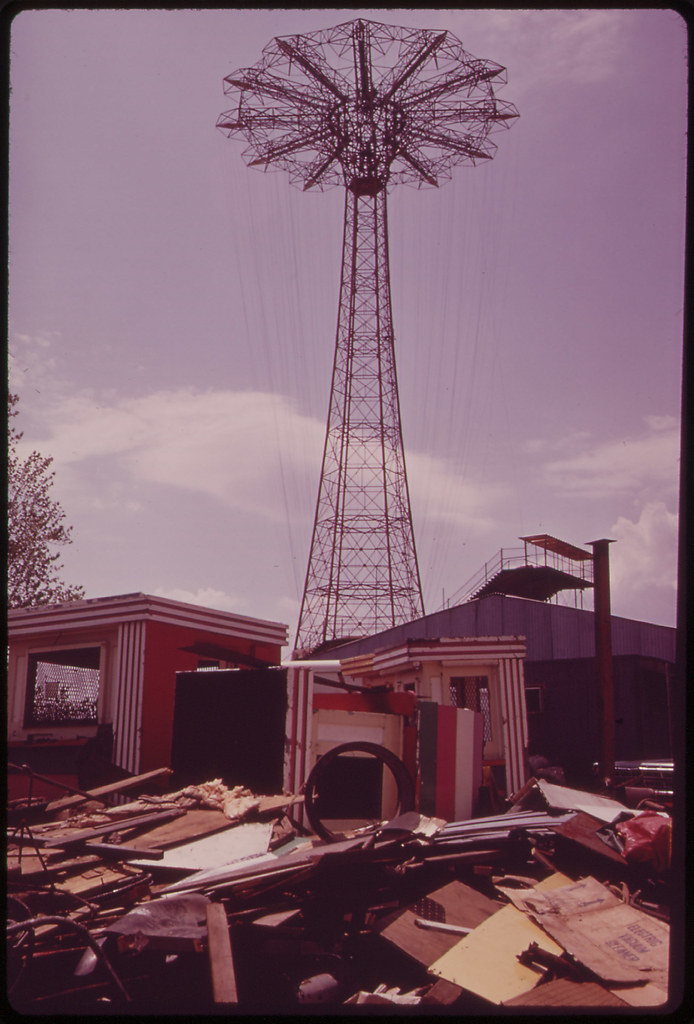
Abandoned parachute jump at Steeplechase Park on Coney Island: photo by Arthur Tress (1940-) for the Environmental Protection Agency's Documerica project, May/June 1973 (US National Archives)
There
was the fall: Tommy Tomorrow's spaceship had broken down in space and
they were all falling into the void. It was always like that. Falling,
falling, and then the abrupt awakening. Waking up terrified in a pool of
sweat, with the sheets sticking to his body.
"Grandma Hazel, why do I always fall when I'm sleeping?"
"It's Jehovah letting go of your hand," Grandma Hazel would say.
"Papa Lorenzo, why do people always fall when they're asleep?"
"That has to do with what they've eaten," Papa Lorenzo would say. "Chickpeas are bad for you."
But
now Agar was falling just the same. He had eaten lentils that night and
was falling just the same into the void, kicking at nothing, trying to
grasp at invisible branches.
"Wood, Wood!" Tommy Tomorrow's voice carried across 8,000 miles.
"Wood here."
"Wood, I think we're crashing. We've fallen into a bottomless abyss and we're being dragged by a meteorite belt -- "
Tommy Tomorrow cover of Showcase #41 (Nov./Dec. 1962): artwork by Lee Elias; image by Basigue, 28 September 2006
It
was always like that: falling, falling, and then the abrupt awakening.
Sometimes he saw the beach's lights from afar and heard the roaring of
the sea and fell from the Coney Island Ferris wheel.
He
fell toward the white floor of the amusement park and he could see the
operator's stupefied mouth opening like an immense red O and the
frightened eyes of the children in the bumper cars. He would fall and
never reach the floor. When there were just a few inches to go he'd
awake abruptly, in the darkness of his room bathed in sweat. Outside,
stray dogs barked. In the distance, he could hear the noise of waves
breaking and then dragging over the sharp rocks: splashhh!
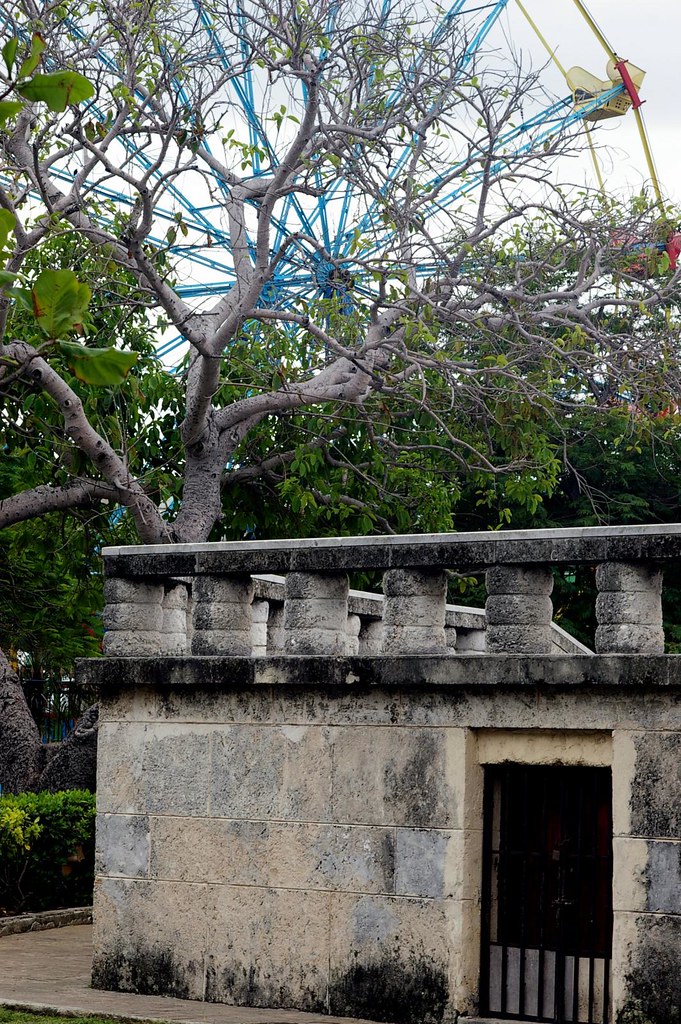
He saw a shadow move on the other side of the door. Then steps and the red light: click!
It
was Papa Lorenzo. He was asleep, dragging his hands along the bathroom
wall tiles for balance. He walked naked in his sleep, and now he was
going to urinate over the toilet. Agar half saw him and turned his head
away. It shamed him to see his father urinate and then shudder with the
last drop.
Papa
Lorenzo urinated for a long while, leaning on the wall, and Agar
thought he would never finish. Then he shuddered, turned off the lights,
and staggered on in the darkness.
At last, Agar heard him fall like a dead weight on the bed and kick furiously against the sheets. Then all was absolutely dark again.
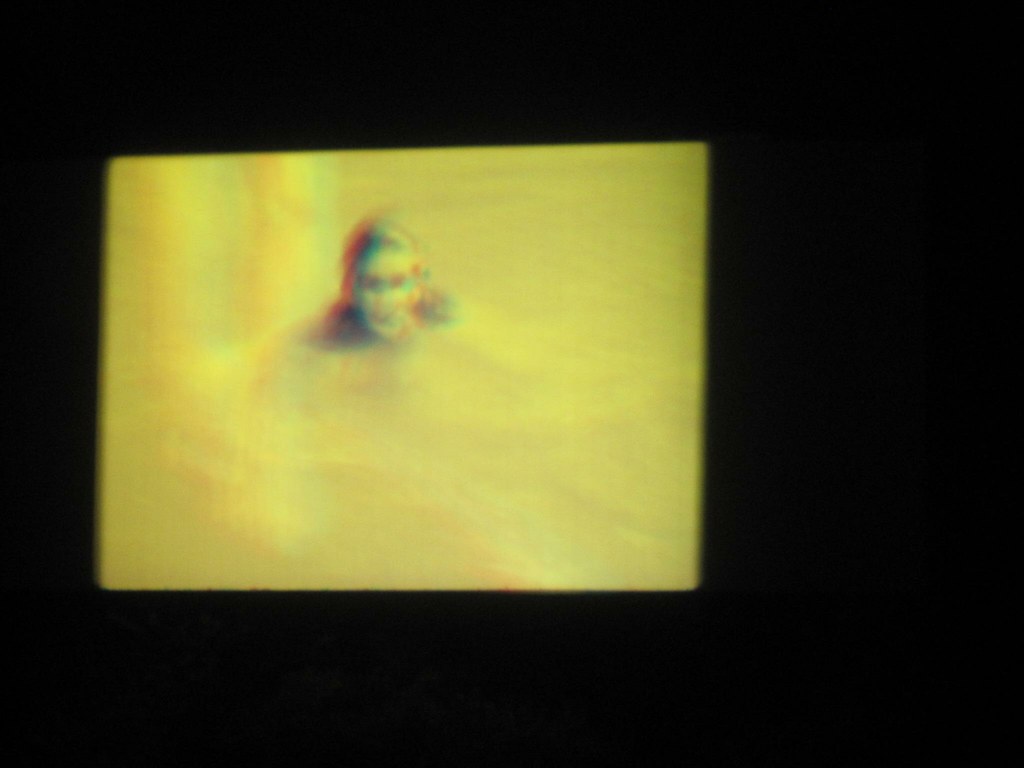
Scene from Creature from the Black Lagoon (1954), screenshot taken at Holiday Auto Theatre, Hamilton, Ohio: photo by Kendall Bruns, 18 October 2009
Behind the window, out came the old witch from "The Black Cat" to look at Agar, smiling sadistically. Twin vampires waited in the yard for their wooden stakes. A large spider web came down, like a fisherman's net, from the ceiling. Around his bed jumped the bug-eyed imps from the Cantarranas River. A donkey with a man's head galloped through the park.
At last, Agar heard him fall like a dead weight on the bed and kick furiously against the sheets. Then all was absolutely dark again.

Scene from Creature from the Black Lagoon (1954), screenshot taken at Holiday Auto Theatre, Hamilton, Ohio: photo by Kendall Bruns, 18 October 2009
Behind the window, out came the old witch from "The Black Cat" to look at Agar, smiling sadistically. Twin vampires waited in the yard for their wooden stakes. A large spider web came down, like a fisherman's net, from the ceiling. Around his bed jumped the bug-eyed imps from the Cantarranas River. A donkey with a man's head galloped through the park.
He
felt someone clutching the sole of his foot with long yellow fingers,
and he covered himself completely with the sheet. He must have looked
like a dead man in a London morgue.
The old night watchman turned his head to better hear Big Ben's bells: clang, clang, clang!
"It's twelve," Count Dracula said, touching Agar's back with a long nail. The count's claw. The count's fang.
Agar
was shaking. The witches surrounded him from all the corners of the
room. Every crack in the wall became a monster skinned alive by a uranium
bath. "If I open my eyes, I'll see them. I'll see them. I'll see them.
My God, when will the night end!"
The night was crushing him. Full of visions -- white like a ghost's sheet.
Then silence.
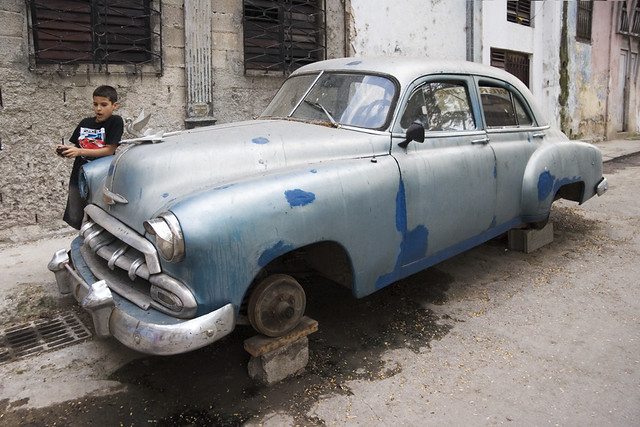
Boy and old car, Havana: photo by Graham (Floppylion), 5 January 2007
"Your cousin Genovevo was a terrible boy," Grandma Hazel said, suddenly appearing in his memory. "Spoiled like you, he even raised his hand to his mother. May God forgive him!
Mama Pepita stared at him coldly from the sofa. Aunt Dorita and Hubert's wife also stared.
"The last time Genovevo raised his hand to his mother, do you know what happened?"
Agar was trembling. He didn't want to hear Genovevo's story.
"Genovevo was a shithead!" he screamed inside his head.
"His
whole arm froze," Grandma Hazel said seriously: "Frozen like a stick.
And when he died, they had to saw it off to bury him in a box as God
decrees."

creature loot [La Vendetta del Mostro: poster for 1955 Italian release of Revenge of the Creature]: photo by lalalady (awonderfultreat), 10 August 2008

creature loot [La Vendetta del Mostro: poster for 1955 Italian release of Revenge of the Creature]: photo by lalalady (awonderfultreat), 10 August 2008
That
was the story of Genovevo. Although it was also the story of Basilio,
the boy from Tia Dorita's town whose tongue reached his navel. All
because one day he yelled at his sick mother. Mama Pepita nodded her
head.
"Sick,"
she reiterated bitterly. "And tell him, too, that whoever says filthy
things, his tongue will also turn purple for the rest of his life.
Purple and long."
Agar touched his tongue in the darkness.
It was there.
It
seemed harder and longer than usual. He tried to speak and a hoarse
sound came out.
He would have cried for help -- women and children first -- but Papa Lorenzo would have gotten up, staggering, and said, "What in the hell is wrong with that damned kid? Can't I even sleep in this house?"
He would have cried for help -- women and children first -- but Papa Lorenzo would have gotten up, staggering, and said, "What in the hell is wrong with that damned kid? Can't I even sleep in this house?"
Agar
held back his scream and felt himself sweating under the blanket. He
knew that if he uncovered himself, Genovevo would be there. with his
sawed-off arm, right next to Count Dracula, the Creature from the Black Lagoon, and the Spider Queen.
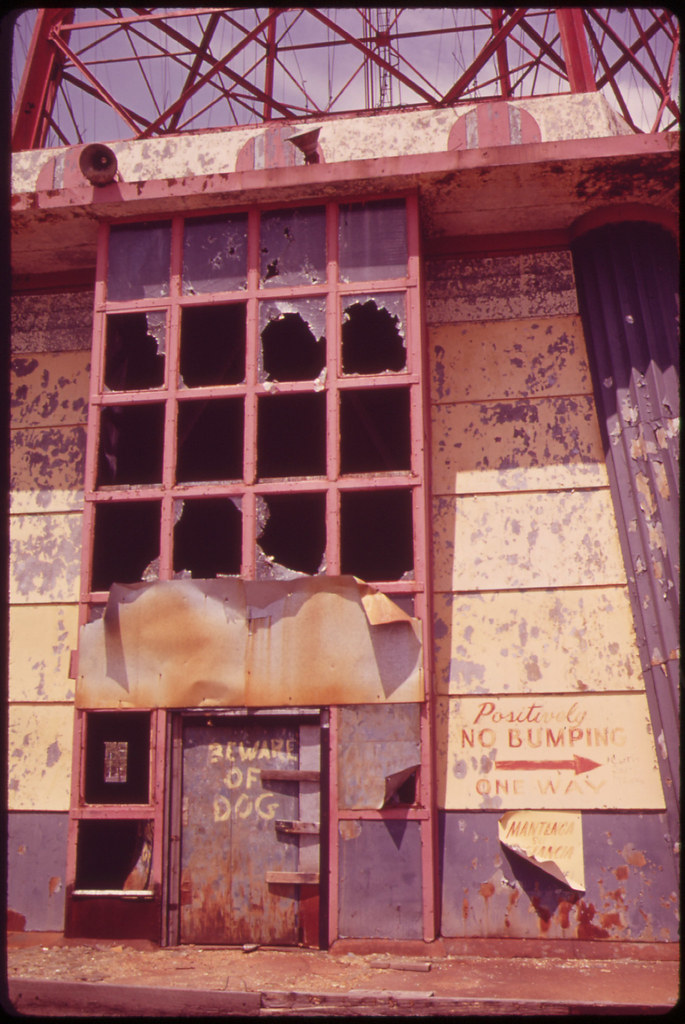
Entrance to abandoned parachute jump at Steeplechase Park on Coney Island: photo by Arthur Tress for the Environmental Protection Agency's Documerica project, May/June 1973 (US National Archives)

Back street in Old Town (Habana Vieja), Havana: photo by Libby Norman, March 2012
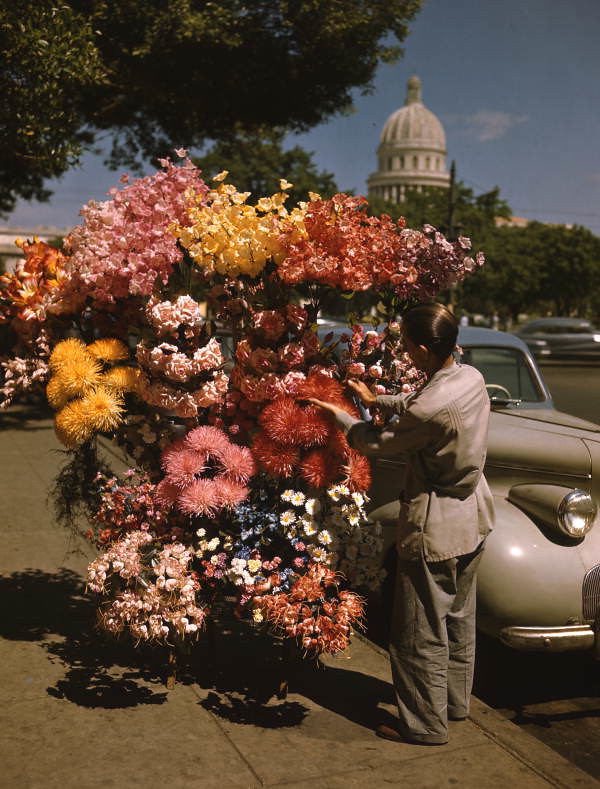
Flower vendor in Havana: photo by Joseph Janney Steinmetz, c. 1945 (Joseph Janney Steinmetz Collection, Florida State Library)
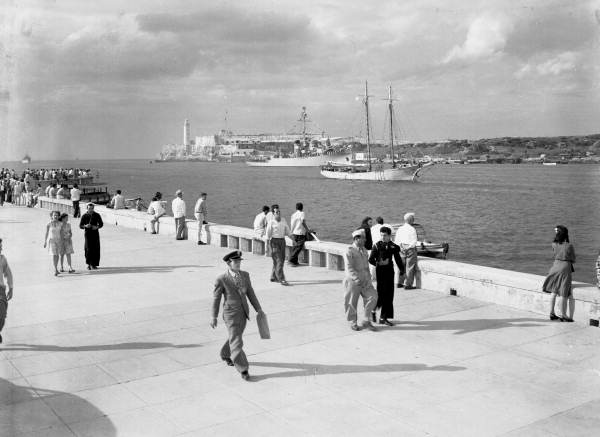
New merchant marine ship entering Havana harbor: photo by Joseph Janney Steinmetz, 2 March 1948 (Florida State Library)

New merchant marine ship entering Havana harbor: photo by Joseph Janney Steinmetz, 2 March 1948 (Florida State Library)
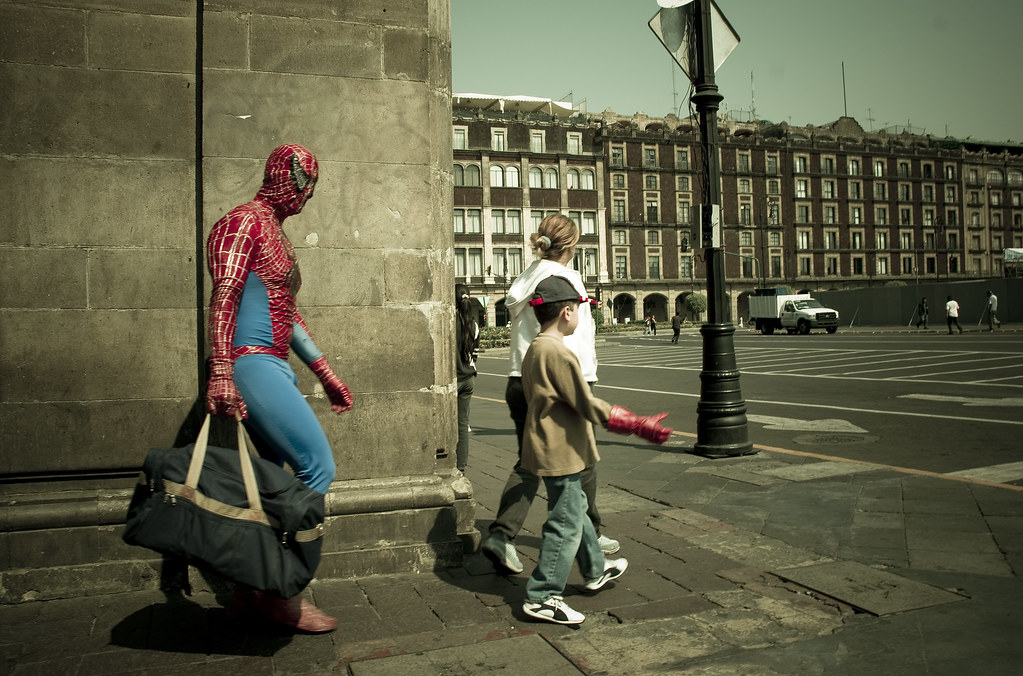
Being a superhero is NO easy task when you have to face daily activities... like walking around with the family: photo by Eneas De Troya, 25 May 2008
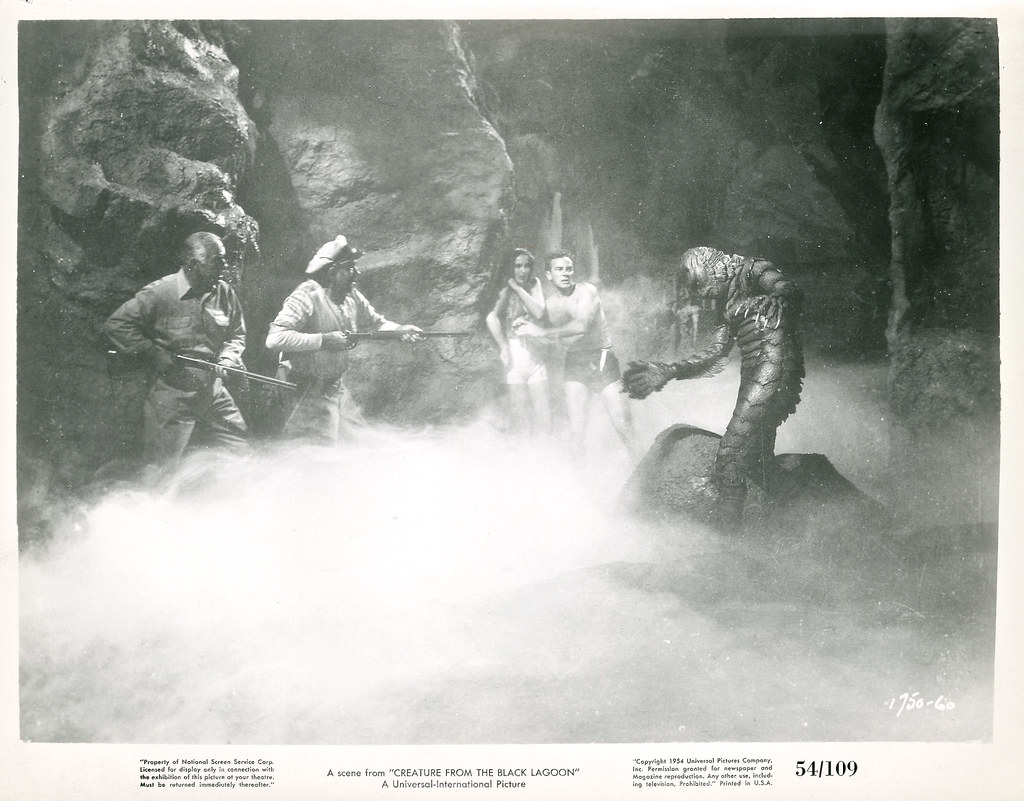
Creature from the Black Lagoon (1954), promotional still. Starring Richard Carlson, Julia Adams, Richard Denning, Antonio Moreno, Nestor Paiva, Whit Bissell, Ricou Browning, and Ben Chapman. Directed by Jack Arnold. After Dr. Carl Maia finds unique skeletal remains, a group of scientists led by David Reed head down the Amazon to see if other remains can be found. They have little luck at first until they are told that further down river is the Black Lagoon where other fossils might be found. They get more than they bargained for however when they discover a living prehistoric creature -- a half-man, half amphibious reptile that doesn't take kindly to their attempts to capture him. The creature does take a liking to Kay Lawrence and kidnaps her but the scientists are soon at war with the creature when it won't let them leave the lagoon: image by Morbius19, 26 November 2012




3 comments:
The sense of a dream's tyranny is very strong.
Always an unsettling thing to be closed up with the wounds and detritus of memory and the old familial theatre playing out like a record jumpy with scratches.
Yes, that's the power at work here.
Some helpful bits on Rosales from the introduction by
Cuban journalist and novelist, Norberto Fuentes:
__
The author of the two books that make up Leapfrog & Other Stories did everything he could so that none of this would make it into the reader's hands. His favorite method was fire. I know of at least two great novels and an epic poem totalling over one hundred pages that he threw into the flames. I think it was, above all, an act of courage and not of madness. And I don't think there's anyone else in the world, beside his sister Leyma, who can speak with authority about Guillermo. After having written the last word of each creation, he seemed to give them a certain life span, and if in a given period of time his editor (or anyone else) didn't show any interest, then he condemned them, without hesitation, to the flames. It could also have been a reflection of the visceral disdain he felt for the world around him. Destruction at the end of the torturous path to creation seemed a relief to him. But no one knows about the books I am referring to because no one read them. I had had before me the novel Socrates and his epic poem The Hero of Yaguajay, about Commander Camilo Cienfuegos (I can still hear his evil, mocking laughter when he said, "If they only knew I'm doing an imitation of Quasimodo!"). And I had read his novel about the origins of Cuban rum and the wars of independence, with that amusing episode about General Shafter's landing on Daiquiri Beach, to the east of Santiago de Cuba. And I'd read the story, "Colonel, it's Puny Speaking," and another novel no one talks about but that concerns a battle against Batista on an imaginary mountain on the Sierra Maestra—La Taguara—with Camilo Cienfuegos again as the main character. I can't believe none of them exist now. Worse still, these stunning and unique literary works did exist and not even their ashes remain. Can you imagine what American literature would be without a Poe or a Wolfe, or French literature without Baudelaire or Camus, or Russian literature without Artsybashev or Akhmatova, just to name the most secretive and hidden writers? Well, then we Cubans have to accept our own national literature without Guillermo Rosales.
Our friendship began on his first day of work as a journalist for the magazine, Mella, in the summer of 1961. He was 15 years old and hadn't read Hemingway, much less Faulkner, but he gave me a run for my money with his encyclopedic knowledge of the great Will Eisner's The Spirit. It was our shared culture as Cuban kids who grew up in the 1950s. This is tangible on the pages of Leapfrog, a book written by Guillermo very early in the 1960s and which he ended up naming very differently from how we first knew it in its initial Spanish edition. It was originally called Holy Saturday, Resurrection Sunday. It escaped the bonfire because Delia, his loving mother, went around picking up the pieces of paper and wrinkled sheets that her son left lying around as he was writing... We can assume that in 1993, when Guillermo made the decision to destroy himself, he wasn't going to leave his unpublished books at the mercy of unknown hands rummaging about.* So he proceeded, with as much disdain as meticulousness, to burn the thick bundle of his novel about rum and Cuba's liberators and any papers he had left in his drawers. Later, he put the barrel of a gun to his temple, metal that was cold to the touch. A Cuban exile community which doesn't understand him and which distorts him (and in the end, can't stand him) has yielded few readers. Perhaps he did well to throw it all to the flames.
*He committed suicide on July 9, 1993
This is astonishing. Curtis
Post a Comment